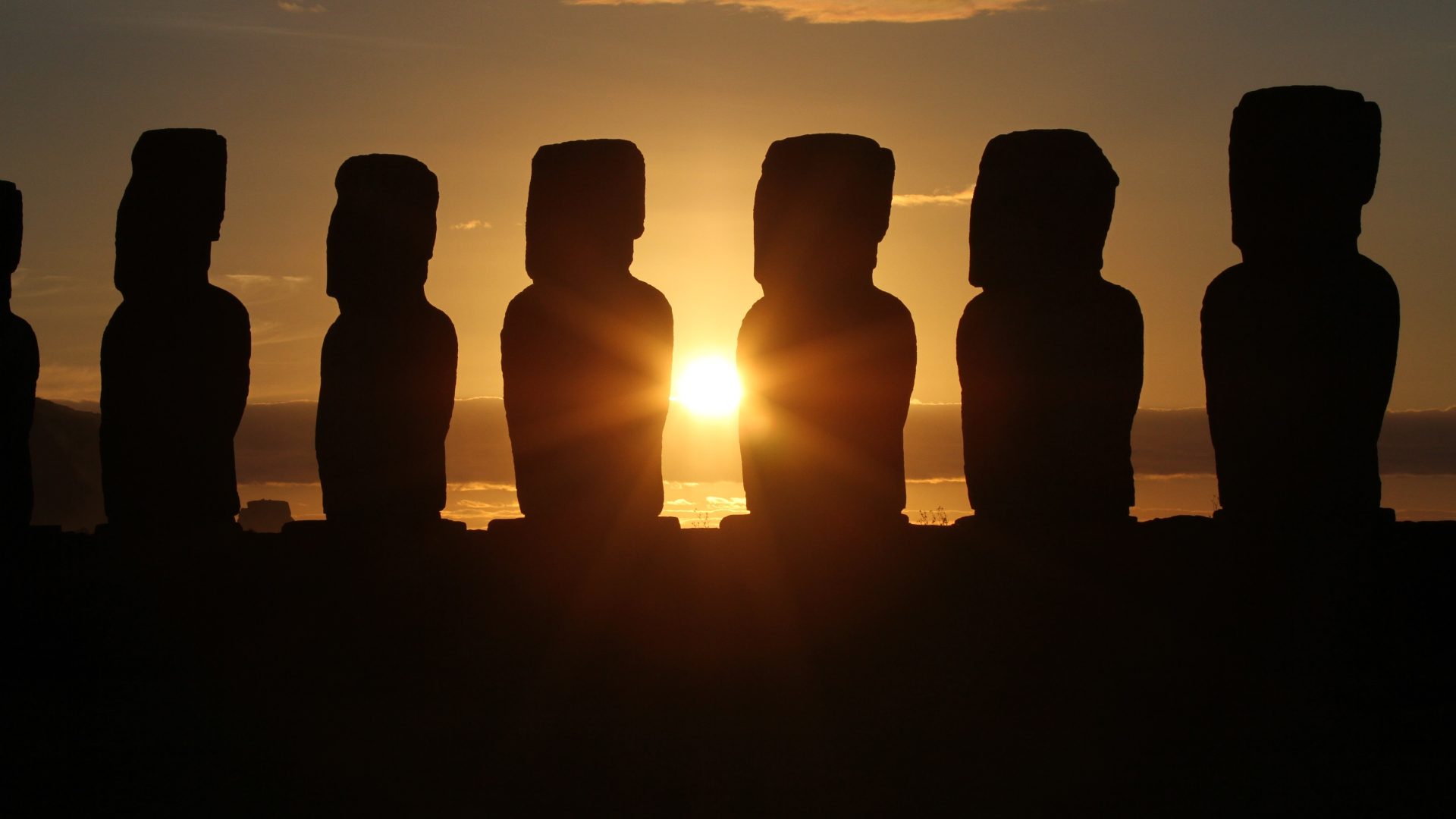
Just a couple of months since reopening after COVID-19, the future of tourism to the remote area is once again uncertain. What do the fires mean for the island’s visitors, and the native people who still live there?


Just a couple of months since reopening after COVID-19, the future of tourism to the remote area is once again uncertain. What do the fires mean for the island’s visitors, and the native people who still live there?
The glowering stone statues dotting the landscape of Easter Island, have drawn fascinated visitors to the island that sits off the Chilean coast for decades. But on October 3, fires burned 247 acres of Rapa Nui National Park—which covers nearly half of the island—and an estimated 386 of the over 1,000 iconic stone statues, called moai.
Park officials are still surveying the damage, but say that high temperatures could cause fractures that compromise the structural integrity of the moai, which range in height from 6 to 30 feet tall and are made entirely of basalt. A Facebook post by the local municipality describes “irreparable damage,” with photos documenting scorched stone figures.
Right now, the park—which is also a designated UNESCO World Heritage Site—is still closed to visitors. Some sources have attributed the flames to the nearby volcano, but Rapa Nui’s mayor told Chilean radio that “all fires on Rapa Nui are caused by human beings.”
In the past, recklessness and vandalism have caused damage to the moai, so suspicion of careless visitors to the island is warranted. But regardless of what started the fire, the mayor argues that the park doesn’t get the resources it needs from the Chilean government to put in place a fire protection plan for the nearly 40,000-acre park, which contains a large number of archaeological sites besides the maoi.
The damaged moai aren’t just a problem for Chile’s tourism industry. The stone figures are culturally significant to the indigenous Rapa Nui people, who still inhabit the island and care for the 600-year-old sculptures as an important part of their history. For the researchers trying to understand the island’s cultural history, destroyed moai are lost clues—as is the burnt quarry from which the stone was extracted.
The exact meaning and placement of the stone heads have puzzled modern archaeologists, but the most widely accepted theory is that they marked freshwater drinking sources—either underground springs or human-made wells—on an island without permanent streams.
Easter Island had only just reopened in August to visitors after being closed since the start of the pandemic, and the 160,000 yearly visitors made tourism the island’s largest industry before COVID-19. At this point, it’s still unclear how long they’ll remain closed after this fire—and whether it will spark any changes to how the world’s largest outdoor museum is run.

Miyo McGinn is Adventure.com's US National Parks Correspondent and a freelance writer, fact-checker, and editor with bylines in Outside, Grist, and High Country News. When she's not on the road in her campervan, you can find her skiing, hiking, and swimming in the mountains and ocean near her home in Seattle, Washington.








Can't find what you're looking for? Try using these tags: